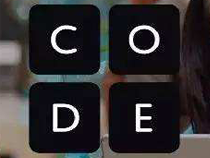背景
在Java编程中,经常需要异步执行某个任务,一般继承Thread类或实现Runnable接口的方法来异步执行任务,除了这两种方法外,还可实现Callable来实现,在使用Callable的同时一般都会使用Future来配合获取执行结果,这几种方式使用起来或多或少存在不足,在jdk1.8中,提供了一个异步处理任务的工具CompletableFuture,接下来就通过实际代码体验CompletableFuture的使用。
创建异步线程任务
根据supplier创建CompletableFuture任务
1
2
3
4
5
6
7
8
9
10
11
12
13
14
15
16
17
18
19ExecutorService executor = Executors.newSingleThreadExecutor(); CompletableFuture<Void> completableFuture = CompletableFuture.runAsync(() -> System.out.println("hello CompletableFuture1"), executor); // supplyAsync的使用 CompletableFuture<String> future = CompletableFuture .supplyAsync(() -> { System.out.print("hello "); return "CompletableFuture2"; }, executor); // 阻塞等待,runAsync 的future 无返回值,输出null System.out.println(completableFuture.join()); // 阻塞等待 String name = future.join(); System.out.println(name); executor.shutdown(); --------输出结果-------- hello CompletableFuture1 null hello CompletableFuture2
线程串行执行
任务完成则运行action,不关心上一个任务的结果,无返回值
1
2
3
4
5
6
7CompletableFuture<Void> future = CompletableFuture .supplyAsync(() -> "hello siting", executor) .thenRunAsync(() -> System.out.println("OK"), executor); executor.shutdown(); --------输出结果-------- OK
任务完成则运行fn,依赖上一个任务的结果,有返回值
1
2
3
4
5
6
7
8
9
10
11
12ExecutorService executor = Executors.newSingleThreadExecutor(); CompletableFuture<String> future = CompletableFuture .supplyAsync(() -> "hello world", executor) .thenApplyAsync(data -> { System.out.println(data); return "OK"; }, executor); System.out.println(future.join()); executor.shutdown(); --------输出结果-------- hello world OK
thenCompose - 任务完成则运行fn,依赖上一个任务的结果,有返回值
1
2
3
4
5
6
7
8
9
10
11
12
13
14
15//第一个异步任务,常量任务 CompletableFuture<String> f = CompletableFuture.completedFuture("OK"); //第二个异步任务 ExecutorService executor = Executors.newSingleThreadExecutor(); CompletableFuture<String> future = CompletableFuture .supplyAsync(() -> "hello world", executor) .thenComposeAsync(data -> { System.out.println(data); return f; //使用第一个任务作为返回 }, executor); System.out.println(future.join()); executor.shutdown(); --------输出结果-------- hello world OK
线程并行执行
两个CompletableFuture并行执行完,然后执行action,不依赖上两个任务的结果,无返回值
1
2
3
4
5
6
7
8
9
10
11
12//第一个异步任务,常量任务 CompletableFuture<String> first = CompletableFuture.completedFuture("hello world"); ExecutorService executor = Executors.newSingleThreadExecutor(); CompletableFuture<Void> future = CompletableFuture //第二个异步任务 .supplyAsync(() -> "hello siting", executor) // () -> System.out.println("OK") 是第三个任务 .runAfterBothAsync(first, () -> System.out.println("OK"), executor); executor.shutdown(); --------输出结果-------- OK
两个CompletableFuture并行执行完,然后执行action,依赖上两个任务的结果,无返回值
1
2
3
4
5
6
7
8
9
10
11
12//第一个异步任务,常量任务 CompletableFuture<String> first = CompletableFuture.completedFuture("hello world"); ExecutorService executor = Executors.newSingleThreadExecutor(); CompletableFuture<Void> future = CompletableFuture //第二个异步任务 .supplyAsync(() -> "hello siting", executor) // (w, s) -> System.out.println(s) 是第三个任务 .thenAcceptBothAsync(first, (s, w) -> System.out.println(s), executor); executor.shutdown(); --------输出结果-------- hello siting
两个CompletableFuture并行执行完,然后执行fn,依赖上两个任务的结果,有返回值
1
2
3
4
5
6
7
8
9
10
11
12
13
14
15
16
17//第一个异步任务,常量任务 CompletableFuture<String> first = CompletableFuture.completedFuture("hello world"); ExecutorService executor = Executors.newSingleThreadExecutor(); CompletableFuture<String> future = CompletableFuture //第二个异步任务 .supplyAsync(() -> "hello siting", executor) // (w, s) -> System.out.println(s) 是第三个任务 .thenCombineAsync(first, (s, w) -> { System.out.println(s); return "OK"; }, executor); System.out.println(future.join()); executor.shutdown(); --------输出结果-------- hello siting OK
线程并行执行(二者选其最快)
线程并行执行,谁先执行完则谁触发下一任务
上一个任务或者other任务完成, 运行action,不依赖前一任务的结果,无返回值
1
2
3
4
5
6
7
8
9
10
11
12
13
14
15
16
17
18
19
20
21
22// 第一个异步任务,休眠1秒,保证最晚执行晚 CompletableFuture<String> first = CompletableFuture.supplyAsync(()->{ try{ Thread.sleep(1000); }catch (Exception e){} System.out.println("hello world"); return "hello world"; }); ExecutorService executor = Executors.newSingleThreadExecutor(); CompletableFuture<Void> future = CompletableFuture // 第二个异步任务 .supplyAsync(() ->{ System.out.println("hello siting"); return "hello siting"; } , executor) // () -> System.out.println("OK") 是第三个任务 .runAfterEitherAsync(first, () -> System.out.println("OK") , executor); executor.shutdown(); --------输出结果-------- hello siting OK
上一个任务或者other任务完成, 运行action,依赖最先完成任务的结果,无返回值
1
2
3
4
5
6
7
8
9
10
11
12
13
14
15
16
17
18// 第一个异步任务,休眠1秒,保证最晚执行晚 CompletableFuture<String> first = CompletableFuture.supplyAsync(()->{ try{ Thread.sleep(1000); }catch (Exception e){} return "hello world"; }); ExecutorService executor = Executors.newSingleThreadExecutor(); CompletableFuture<Void> future = CompletableFuture // 第二个异步任务 .supplyAsync(() -> "hello siting", executor) // data -> System.out.println(data) 是第三个任务 .acceptEitherAsync(first, data -> System.out.println(data) , executor); executor.shutdown(); --------输出结果-------- hello siting
上一个任务或者other任务完成, 运行fn,依赖最先完成任务的结果,有返回值
1
2
3
4
5
6
7
8
9
10
11
12
13
14
15
16
17
18
19
20
21
22
23//第一个异步任务,休眠1秒,保证最晚执行晚 CompletableFuture<String> first = CompletableFuture.supplyAsync(()->{ try{ Thread.sleep(1000); }catch (Exception e){} return "hello world"; }); ExecutorService executor = Executors.newSingleThreadExecutor(); CompletableFuture<String> future = CompletableFuture //第二个异步任务 .supplyAsync(() -> "hello siting", executor) // data -> System.out.println(data) 是第三个任务 .applyToEitherAsync(first, data -> { System.out.println(data); return "OK"; } , executor); System.out.println(future); executor.shutdown(); --------输出结果-------- hello siting OK
处理任务结果或者异常
exceptionally-处理异常:如果之前的处理环节有异常问题,则会触发exceptionally的调用相当于 try…catch
1
2
3
4
5
6
7
8
9
10
11
12
13CompletableFuture<Integer> first = CompletableFuture .supplyAsync(() -> { if (true) { throw new RuntimeException("main error!"); } return "hello world"; }) .thenApply(data -> 1) .exceptionally(e -> { e.printStackTrace(); // 异常捕捉处理,前面两个处理环节的日常都能捕获 return 0; });
handle-任务完成或者异常时运行fn,返回值为fn的返回
1
2
3
4
5
6
7
8
9
10
11
12
13
14
15
16CompletableFuture<Integer> first = CompletableFuture .supplyAsync(() -> { if (true) { throw new RuntimeException("main error!"); } return "hello world"; }) .thenApply(data -> 1) .handleAsync((data,e) -> { e.printStackTrace(); // 异常捕捉处理 return data; }); System.out.println(first.join()); --------输出结果-------- java.util.concurrent.CompletionException: java.lang.RuntimeException: main error! ... 5 more null
whenComplete-任务完成或者异常时运行action,有返回值
-
whenComplete与handle的区别在于,它不参与返回结果的处理,把它当成监听器即可
-
即使异常被处理,在CompletableFuture外层,异常也会再次复现
-
使用whenCompleteAsync时,返回结果则需要考虑多线程操作问题,毕竟会出现两个线程同时操作一个结果
1
2
3
4
5
6
7
8
9
10
11
12
13
14
15
16
17CompletableFuture<AtomicBoolean> first = CompletableFuture .supplyAsync(() -> { if (true) { throw new RuntimeException("main error!"); } return "hello world"; }) .thenApply(data -> new AtomicBoolean(false)) .whenCompleteAsync((data,e) -> { //异常捕捉处理, 但是异常还是会在外层复现 System.out.println(e.getMessage()); }); first.join(); --------输出结果-------- java.lang.RuntimeException: main error! Exception in thread "main" java.util.concurrent.CompletionException: java.lang.RuntimeException: main error! ... 5 more
多个任务的简单组合
1
2
3
4
5
6
7
8
9
10
11CompletableFuture<Void> future = CompletableFuture .allOf(CompletableFuture.completedFuture("A"), CompletableFuture.completedFuture("B")); //全部任务都需要执行完 future.join(); CompletableFuture<Object> future2 = CompletableFuture .anyOf(CompletableFuture.completedFuture("C"), CompletableFuture.completedFuture("D")); //其中一个任务行完即可 future2.join();
取消执行线程任务
1
2
3
4
5
6
7
8
9
10
11
12
13
14
15
16
17
18
19
20
21
22
23CompletableFuture<Integer> future = CompletableFuture .supplyAsync(() -> { try { Thread.sleep(1000); } catch (Exception e) { } return "hello world"; }) .thenApply(data -> 1); System.out.println("任务取消前:" + future.isCancelled()); // 如果任务未完成,则返回异常,需要对使用exceptionally,handle 对结果处理 future.cancel(true); System.out.println("任务取消后:" + future.isCancelled()); future = future.exceptionally(e -> { e.printStackTrace(); return 0; }); System.out.println(future.join()); --------输出结果-------- 任务取消前:false 任务取消后:true java.util.concurrent.CancellationException at java.util.concurrent.CompletableFuture.cancel(CompletableFuture.java:2276) at Test.main(Test.java:25)
如有疑问请提issue: https://gitee.com/huangmike/itshare
最后
以上就是糟糕蜡烛最近收集整理的关于Java精简高效异步编程实战的全部内容,更多相关Java精简高效异步编程实战内容请搜索靠谱客的其他文章。








发表评论 取消回复